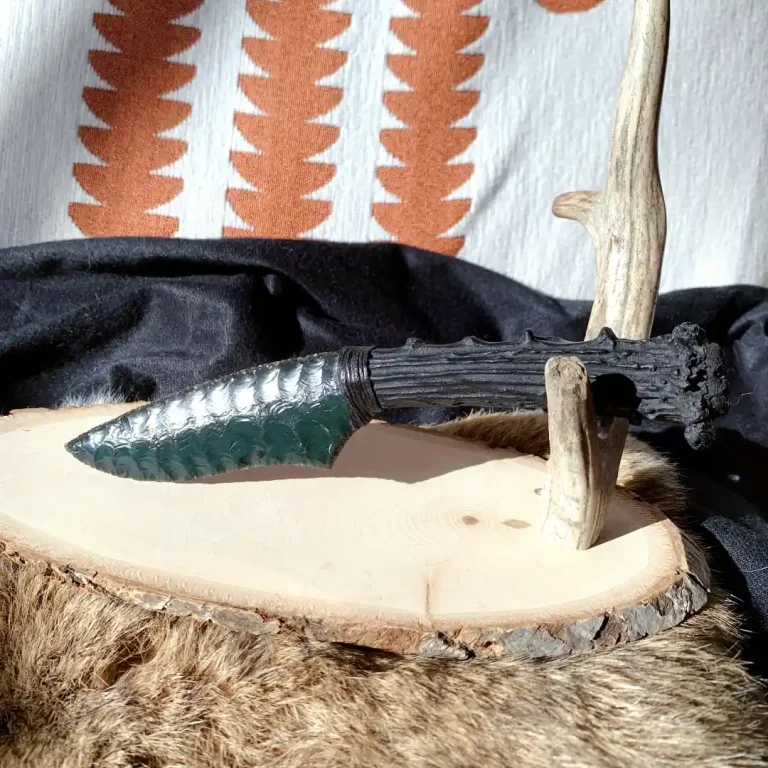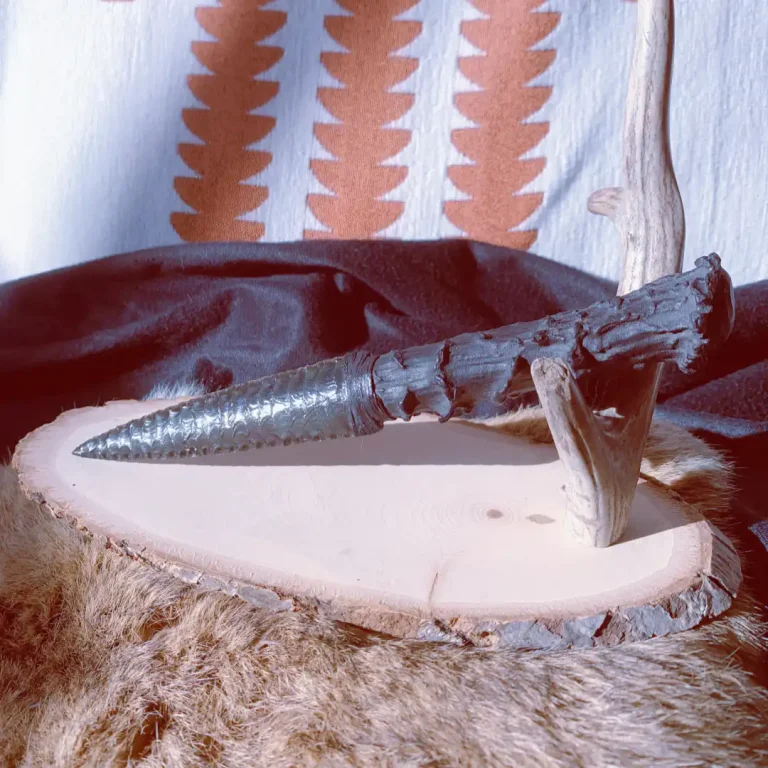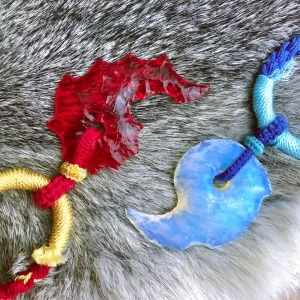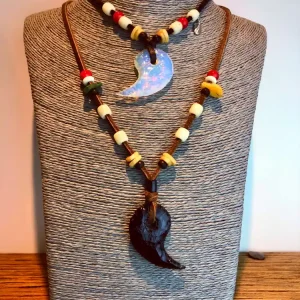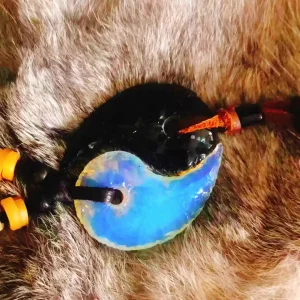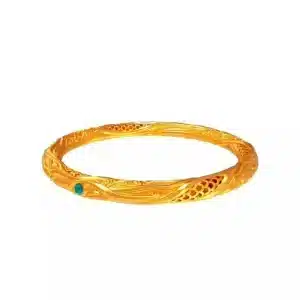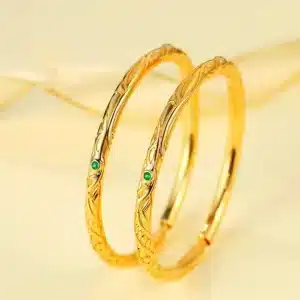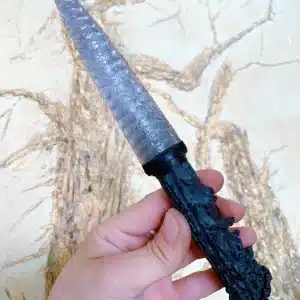Obsidian Knife: Nature’s Sharpest Blade for Survival & Rituals
- January 4, 2025
- Serestone
The obsidian knife isn’t just a tool—it’s a piece of history, a relic of nature’s raw power, and a blade steeped in legend. Whether you’re a Game of Thrones fan, a gaming enthusiast, or a history buff, there’s something undeniably fascinating about holding a weapon that has shaped both ancient civilizations and modern imaginations. But what makes the obsidian knife so unique? Let’s dive into its origins, legendary sharpness, and why it continues to captivate adventurers, collectors, and fantasy lovers alike.
What is an Obsidian Knife?
Imagine wielding a blade so sharp it can cut between individual cells—yes, that’s the power of an obsidian knife. Formed from rapidly cooled volcanic lava, obsidian is nature’s glass, capable of being honed to an edge far finer than any steel blade.
The main chemical component is silicon dioxide (SiO₂), which usually contains between 70% and 75%. Its formation is closely related to volcanic activity. When the lava cools rapidly, the minerals in it do not have enough time to crystallize, thus forming a natural glass, namely obsidian.In addition to silicon dioxide, obsidian may also contain small amounts of other elements and minerals, such as:Aluminum oxide (Al₂O₃),Sodium oxide (Na₂O),Potassium oxide (K₂O),Iron oxide (FeO or Fe₂O₃),Magnesium oxide (MgO),Calcium oxide (CaO),These trace components affect the color and texture of obsidian. For example, the presence of iron and magnesium may cause obsidian to appear dark green or brown, while tiny bubbles or crystalline inclusions may form special varieties such as snowflake obsidian or rainbow obsidian.
Ancient warriors and shamans didn’t just see obsidian as a weapon; they believed it held mystical energy. The Aztecs crafted obsidian knives for both combat and ritual sacrifice, while Mayan priests polished obsidian mirrors for divination. Even today, obsidian is prized in spiritual circles for its supposed protective qualities. Holding an obsidian knife isn’t just gripping a blade—it’s wielding a fragment of Earth’s raw, untamed force.
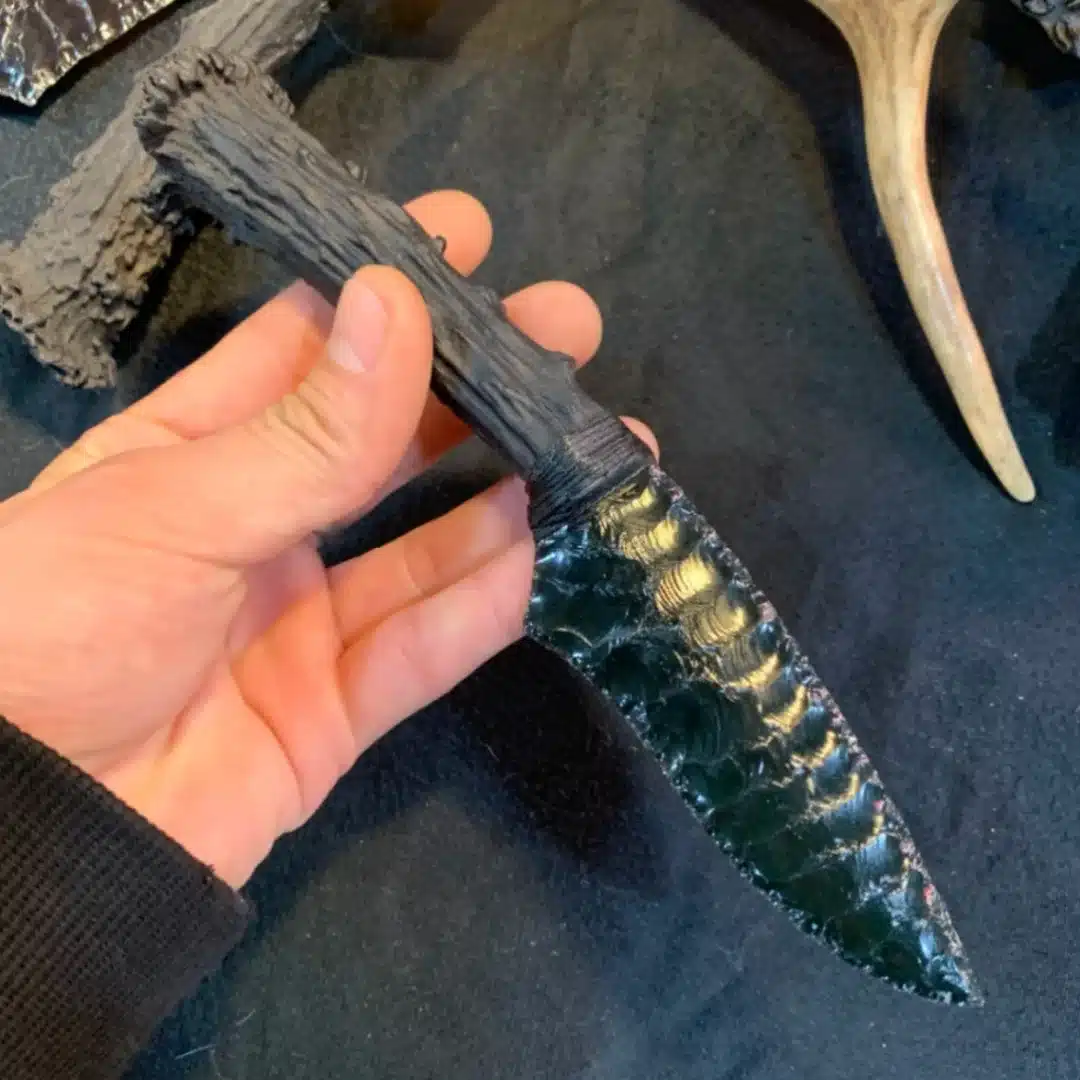
The Origins and History of Obsidian Knives
Obsidian knives, as tools and weapons made of natural volcanic glass, can be traced back to the early days of human civilization. The origin of obsidian knives is closely related to volcanic activity, and its use has run through multiple ancient civilizations, becoming a symbol of human wisdom and craftsmanship.
1. Natural formation and early discovery
Obsidian is a natural glass formed by the rapid cooling of volcanic lava, and its main component is silicon dioxide (SiO₂). Due to its unique physical properties, obsidian can be struck or polished into extremely sharp edges, even sharper than modern steel knives. This property made obsidian discovered and widely used by humans in prehistoric times.
Archaeologists have found tools and weapons made of obsidian in prehistoric sites around the world, especially in areas with frequent volcanic activity, such as Central America, North America, Japan and the Mediterranean. These findings show that the use of obsidian knives can be traced back to the Paleolithic and Neolithic periods, and early humans used it for hunting, cutting and other daily tasks.
2. The glory of Mesoamerican civilization
In Mesoamerica, the use of obsidian knives reached its peak. Civilizations such as the Maya and the Aztecs not only used obsidian to make tools and weapons, but also gave it profound religious and cultural significance.
Mayan civilization: The Maya used obsidian knives for hunting, fighting and sacrificial activities. They believed that obsidian had mysterious powers that could connect humans to the world of gods. Mayan priests used obsidian knives for sacrificial ceremonies, believing that such knives could transmit sacred energy.
Aztec civilization: The Aztecs called obsidian “itzli” and used it extensively to make weapons, such as “macuahuitl”, a wooden war club inlaid with obsidian flakes. Aztec warriors used this weapon to be invincible on the battlefield. In addition, the Aztecs also used obsidian to make mirrors and decorations, believing that these items could help them communicate with the gods.
3. Applications of other ancient civilizations
Japan: In Japan, the use of obsidian can be traced back to the Jomon period (approximately 14,000 BC to 300 BC). The Jomon people used obsidian to make tools and weapons, especially in Hokkaido and Kyushu, where obsidian was widely distributed. Obsidian knives played an important role in ancient Japanese society, not only for daily labor, but also for rituals and sacrifices.
Mediterranean region: Obsidian knives were also widely used in Anatolia (now Turkey) and the Aegean region. Archaeologists have discovered a large number of obsidian tools in these regions, indicating that obsidian played an important role in ancient trade. After being mined from volcanic areas, obsidian was transported to areas as far away as Egypt and Mesopotamia, becoming an important material for the exchange of ancient civilizations.
Obsidian vs. Modern Knives
The Sharpness Revolution
In 2018, a Johns Hopkins University study made a startling discovery: obsidian scalpels could make incisions 3x cleaner than standard steel. The secret lies at the molecular level:
Obsidian Edge: Just 3 nanometers thick (that’s 300x thinner than a human hair)
Steel Scalpel: Typically 20-50 nanometers with microscopic serrations
“Under an electron microscope, a steel blade looks like a jagged mountain range, while obsidian resembles a perfectly smooth cliff face.” — Dr. Lee, Materials Science Researcher.
The Trade-Off: Fragility vs. Precision
| Characteristic | Obsidian Knife | Surgical Steel | Winner For... |
|---|---|---|---|
| Edge Retention | 5-7 uses before resharpening | 50+ uses | Long procedures |
| Cutting Precision | Cellular-level clean cuts | Slight tissue tearing | Microsurgery |
| Impact Resistance | Breaks at 15 psi pressure | Withstands 90 psi | Trauma surgery |
Real-World Use Case:
Mayo Clinic uses obsidian for corneal surgeries where scarring must be minimized
But ER doctors still prefer steel for emergency tracheotomies
Why This Matters for Your Ritual Knife
While not medical-grade, Serestone’s obsidian knives inherit these traits:
✓ Unmatched sharpness for precise herb cutting in rituals
✓ Energy transfer purity (no metal interference)
✗ Not for prying/pounding (include warning icon)
Pro Tip: Store in the included leather sheath to prevent micro-chipping.
The Spiritual Anatomy of an Obsidian Blade: From Ancient Rituals to Energy Surgery
1. Maya “Soul-Cutting” Ceremonies
Deep in the jungles of Palenque, Maya priests performed “K’uxaj” (Soul Extraction) using obsidian knives. These rituals served two sacred purposes:
Spiritual Healing: Removing “dark energy intrusions” believed to cause illness
Rite of Passage: Adolescents would receive ritual scratches to “carve wisdom into the soul”
Archaeological Note: The Dresden Codex depicts gods holding obsidian blades for celestial bloodletting – a practice replicated by nobles using stingray spines and ritual knives.
2. Modern Energy Surgery: The Science Behind the Magic
Contemporary energy healers utilize obsidian blades for:
A. Cord-Cutting Ceremonies
How it works: The blade’s ultra-fine edge acts as an energetic scalpel to sever:
✓ Toxic relationship ties
✓ Past life attachments
✓ Corporate “energy vampires”Clinical parallel: Mirrors the precision of obsidian scalpels in removing physical tumors
B. Space Cleansing
3-Step Ritual:
Trace doorways/windows with the blade
Visualize black “psychic mold” being scraped away
Seal with copal smoke (traditional Maya combination)
3. Why Obsidian? The Metaphysical Mechanics
| Property | Spiritual Benefit | Scientific Correlation |
|---|---|---|
| Volcanic Origin | Connects to Earth’s core energy | High iron content creates weak magnetic field |
| Glass Structure | "Frozen liquid" amplifies intention | Molecular disorder enhances piezoelectricity |
| Black Color | Absorbs/transmutes negativity | Matches Schumann resonance (7.83Hz) |
User Experience:
“After using my Serestone obsidian knife to cut ties with a toxic ex, I slept through the night for the first time in months.” – Sofia K., verified buyer
4. FAQ: Spiritual Use Concerns
Q: Can I use any obsidian knife for spiritual work?
A: Serestone’s consecrated blades are:Hand-blessed by Maya descendants,Never used for physical cutting (preserves energy purity)
Q: How often should I cleanse my ritual blade?
A: After each major ceremony, or monthly via:
-
Burying in salt overnight
-
Full moon charging
-
Passing through sage smoke
The Myth and Reality of Dragon Glass
If you’re a Game of Thrones fan, you already know obsidian by its Westerosi name—Dragonglass. It was the only material capable of taking down the dreaded White Walkers. While we may not have ice zombies lurking around in real life (thankfully), the allure of an obsidian knife remains just as strong.
In a 2022 survey by the Fantasy Collectors Guild, nearly 65% of collectors stated that owning a weapon tied to mythology or fantasy lore made their collection more meaningful. Whether it’s the connection to ancient rituals or its portrayal in pop culture, the obsidian knife carries a mystique that continues to draw in fantasy lovers and history enthusiasts alike.
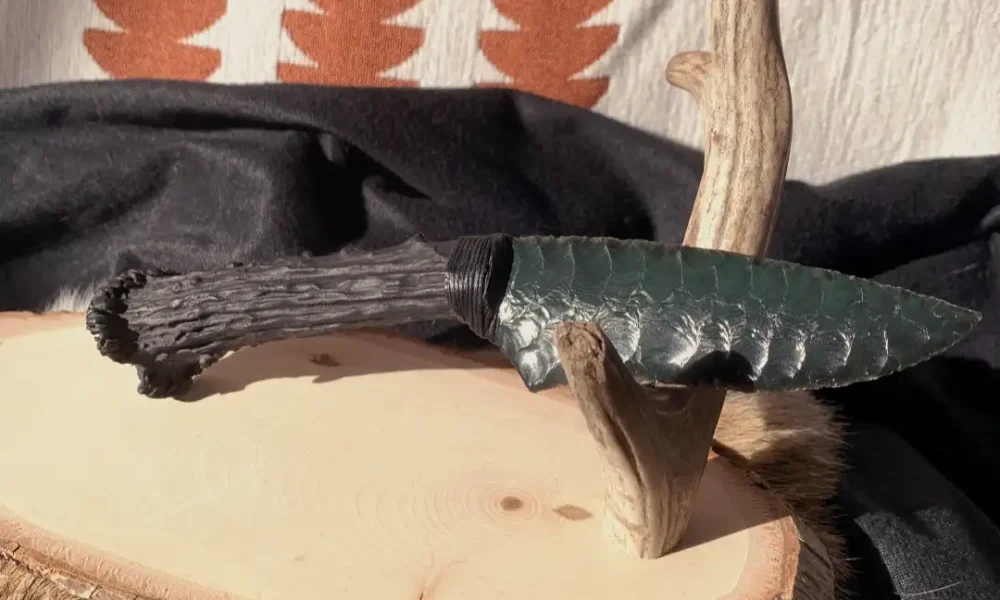
Why Choose an Obsidian Knife?
1. Unmatched Sharpness—A Blade Fit for a Rogue
Obsidian knives are so sharp they can make precise cuts at a microscopic level. In gaming terms, think of it as the ultimate stealth weapon—a dagger that slices through defenses like a cheat code. If you’ve ever played RPGs, you know that an obsidian knife is always a high-tier drop.
2. Aesthetic and Natural Beauty—Loot-Worthy Looks
Each obsidian knife is unique. Some shine with a deep, inky black, while others display mesmerizing rainbow hues, swirling mahogany patterns, or even snowflake-like inclusions. It’s the kind of item you’d expect to find in a legendary loot chest, making it a perfect collector’s piece.
3. A Piece of History—A Relic with Real Power
Owning an obsidian knife isn’t just about having a sharp tool—it’s like holding a piece of ancient lore in your hands. These blades have seen rituals, battles, and the rise and fall of civilizations. If you love history or mythology, this is an artifact worth adding to your collection.
4. A Collector’s Dream—A True Legendary Drop
For artifact enthusiasts, fantasy lovers, and history buffs, an obsidian knife is a must-have. Whether displayed in a collection, used for ceremonial purposes, or simply admired as a conversation starter, it carries an undeniable mystique.
5. A Connection to Gaming Culture—The Real-Life Rare Weapon
Gamers know the thrill of wielding an obsidian blade in RPGs—sleek, deadly, and infused with lore. From The Legend of Zelda to Minecraft, obsidian has long been depicted as a material of power. In fact, a gaming merchandise report from 2023 found that obsidian-themed collectibles saw a 40% increase in sales following major game releases that featured the material. Owning an actual obsidian knife is like bringing a piece of your favorite game into the real world.
Serestone Products with Obsidian Knife
Caring for Your Obsidian Knife
To keep your obsidian knife in top condition, follow these care tips:
Avoid Heavy Impact: While incredibly sharp, obsidian is brittle. No chopping or prying—this blade isn’t your average combat knife.
Store Safely: Keep it in a sheath or display case to prevent accidental damage (or from spooking guests who mistake it for actual Dragonglass).
Clean Gently: Use mild soap and water, and steer clear of anything abrasive.
Handle with Care: This thing is razor-sharp—treat it with the respect it deserves.
Protect from Extreme Temperatures: Sudden changes in temperature can weaken obsidian, so keep it away from excessive heat or cold.
Conclusion
An obsidian knife isn’t just a tool—it’s an artifact of history, a blade of legend, and a symbol of human ingenuity. Whether you’re drawn to its mystical aura, its connection to fantasy worlds, or simply its wicked sharpness, this blade is something truly special.
So, what would you do if you had your own Dragonglass dagger? Would you take on the Night King, display it as a prized collectible, or wield it as your own legendary gaming weapon? Whatever your answer, one thing’s for sure—an obsidian knife is a piece of history, myth, and adventure all wrapped into one incredible blade.

